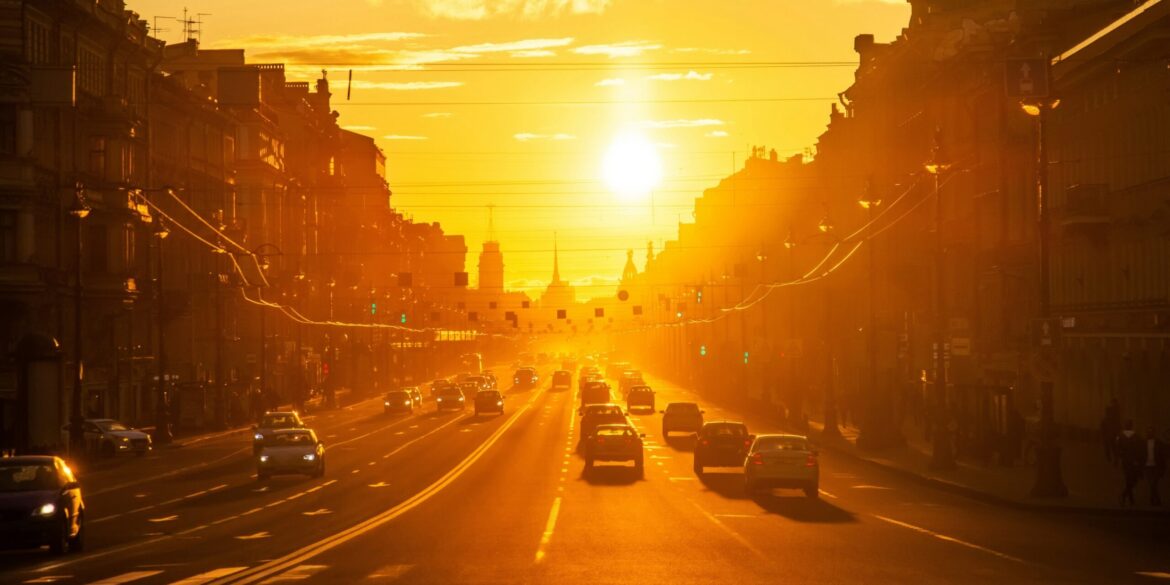A blazing Saturday in Washington, D.C., offered more than just sweltering heat. On August 16, the city experienced its final sunset after 8 p.m. for the year, a subtle but unmistakable signal that the summer season is drawing to a close. At the same time, nearly 200,000 students in Fairfax County, Virginia, prepared to return to classrooms on Monday, further underscoring the shift toward autumn.
The day itself felt very much like midsummer. Temperatures soared to 92 degrees, about four degrees warmer than the seasonal average, and humidity pushed the “feels-like” temperature even higher. Pools were busy, air conditioners hummed, and families seized one of the last weekends of leisure before the school year begins. Yet amid the familiar August warmth, the sun’s earlier retreat hinted at the changing season. On Saturday evening, the sun slipped below the horizon at 8:01 p.m. By Sunday, it was already down to 7:59 p.m., a seemingly small change that nevertheless carries larger symbolic weight.
For those who follow the rhythms of daylight closely, this annual shift serves as a gentle reminder that autumn is approaching, no matter what the thermometer suggests. From here on, each day will shorten a little more quickly, with earlier sunsets becoming noticeable as September nears. By the time fall officially begins with the autumnal equinox in late September, the sun will be setting before 7 p.m. in Washington.
While the changing light provides a natural marker of summer’s decline, the return of schoolchildren is often the more immediate and tangible signal for families across the region. Fairfax County Public Schools, one of the largest school systems in the nation, will welcome nearly 200,000 students back to classrooms this week. For parents, the date marks a return to routines—packing lunches, organizing carpools, and adjusting to early mornings—while for children, it signals the end of carefree summer days.
The convergence of these two markers—an astronomical change in the length of the day and a social change tied to the school calendar—captures the layered ways communities experience the passage of time. In metropolitan Washington, where many residents work long hours and juggle packed schedules, these seasonal cues offer a moment of reflection. Even amid the demands of modern life, people remain tethered to cycles older than the city itself: the tilt of Earth’s axis and the structure of the academic year.
Local meteorologists noted that this year’s shift came amid one of the hottest stretches of August. Though the city often endures summer heat well into September, the earlier sunsets create a perceptible difference in how evenings feel. The combination of lingering warmth and creeping darkness often produces a bittersweet mood—summer weather lingering against the backdrop of diminishing daylight.
For students and teachers, this transitional period also carries emotional weight. Many families spent the last weekend of summer break enjoying barbecues, trips to the pool, or late-night outings, aware that those opportunities will soon be curtailed by homework, practices, and earlier bedtimes. Parents, too, expressed mixed emotions: a sense of relief at returning to structure but also nostalgia for the fleeting weeks of summer freedom.
The symbolism of August’s sunsets resonates beyond the school calendar. Shorter days often serve as an early signal for seasonal shifts in community life, from the winding down of summer concert series to the beginning of preparations for fall festivals, sporting events, and cooler-weather traditions. In a city where politics and policy dominate headlines, even these quieter rhythms remind residents of a shared human experience that transcends partisanship: everyone notices when the days grow shorter.
Looking ahead, Washingtonians can expect sunset times to fall earlier and earlier as the region moves toward autumn. By Labor Day, sunsets will already be around 7:30 p.m., and by October they will slip below 7 p.m. entirely. The cycle continues inexorably, with long winter nights waiting on the horizon before light begins to return again in spring.
For now, the transition is just beginning. Saturday’s sunset and the return of students may not have changed the city overnight, but together they signaled a season in flux. Summer still has some heat left to give, but its hold is weakening. Washington, like much of the country, is slowly turning the page to fall.

